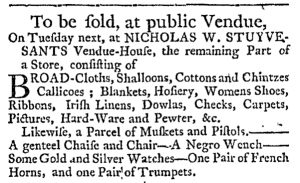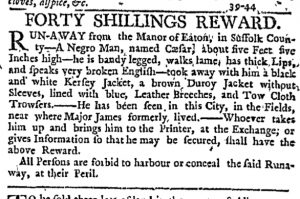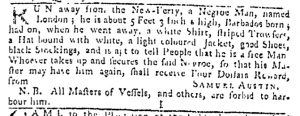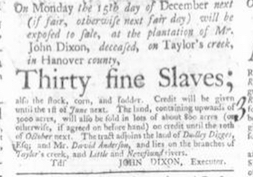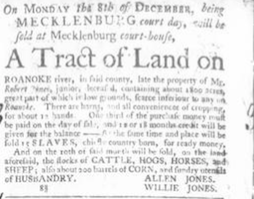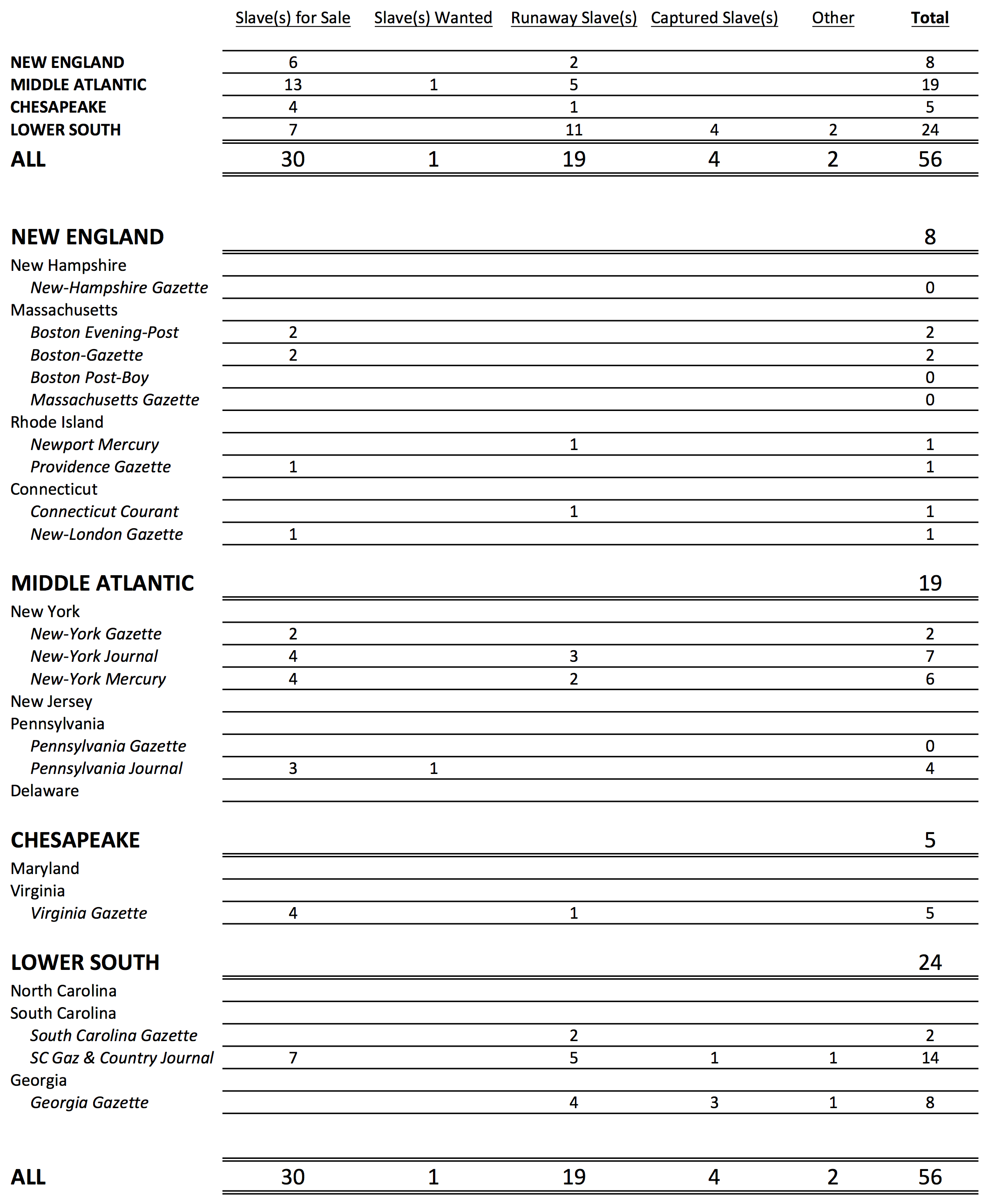GUEST CURATOR: Ceara Morse
What was advertised in a colonial American newspaper 250 years ago today?

“An Astronomical DIARY, Or ALMANACK, For the Year of our Lord CHRIST 1767.”
In this advertisement the printers of the New-Hampshire Gazette announced that their almanac for 1767 “soon will be Publish’d, and Sold.”
My previous knowledge of almanacs was that they told about the weather, moon phases, and other astronomical events, as well as gave information that helped with raising crops. Many different almanacs were published, each depending on the location where colonists lived. The almanac in this advertisement was made for Portsmouth, New Hampshire, and the surrounding area.
As a result of my research on this advertisement, I learned that almanacs were almost as popular as the Bible in colonial America. Jon Butler discusses the demand people had for information about the next year such, such as “all of the astronomical information … necessary to make astrological calculations.[1] Colonists enjoyed the predictions about the weather and astronomical events, often craving more.
Butler also noted that some colonists used “almanacs rather than Bibles to solve personal crises through occult means.”[2] The authors of some almanacs, however, “linked astrology to the ‘filthy Superstition of Heathens.’”[3] Some authors saw astrology as a form of sorcery and witchcraft, even though many colonists demanded almanacs with astrological features, including the “anatomy,” which was “a crude figure of a man … circled by signs of the zodiac that pointed to the parts of the body that each controlled.”[4]
**********
ADDITIONAL COMMENTARY: Carl Robert Keyes
Ceara correctly notes that almanacs were extremely popular in eighteenth-century America. Thanks to the useful and entertaining information they contained, these pamphlet-like periodicals could be found in all sorts of households, from the elite to the most humble. This advertisement hints at their popularity: the printers of the New-Hampshire Gazette sold their almanac both “Wholesale and Retail.” In addition to individual customers purchasing copies for personal use, the printers anticipated that booksellers, shopkeepers, and other retailers would buy in volume and then resell almanacs.
Printers in practically every city that had a printing press produced almanacs for local use in the eighteenth century. This was not merely a matter of authors and printers attempting to get a share of the market (though that played a part as well); each almanac contained precise astronomical information specific to a particular location. Note that the almanac promoted in this advertisement was “Calculated for the Meridian of Portsmouth in New-Hampshire, Lat. 43. 15 N. Long. 70 45 W.” Provided the calculations had been done correctly, readers of the New-Hampshire Gazette would have found this almanac more accurate and useful than one keyed to nearby Boston and certainly better than almanacs produced in other cities. The printers underscored that “Care and Pains ha[d] been taken to have this Almanack Correct.”
To that end, many printers and authors created a sort of brand loyalty associated with the almanacs they produced throughout the eighteenth-century. Benjamin Franklin’s “Poor Richard” lives on in popular memory as the most famous, but other authors gained prestige for the accuracy of their astronomical calculations. Year after year the titles of many almanacs included the names of authors who had gained the public’s confidence. This advertisement also makes a nod in that direction: “’tis presum’d ‘twill be as Acceptable as tho’ it appear’d under the very respectable Name of the late Doctor AMES, or his surviving Son and Successor Nathaniel.” The advertisement did not indicate the author of this particular almanac, but the printers sought to at least associate it with the names of two of the most popular and trusted authors.
Like newspapers and the advertisement they contained, almanacs provided an important source of revenue for colonial printers. The printers of the New-Hampshire Gazette announced that their almanac would soon be for sale while it was still in press, an entire two months before the new year began. Other printers began advertising their almanacs two months earlier. Demand certainly existed for these slim periodicals, but printers used frequent advertisements over many months to encourage even greater numbers of customers to purchase almanacs.
**********
[1] Jon Butler, “Magic, Astrology, and the Early American Religious Heritage, 1600-1760,” American Historical Review 84, no. 2 (April 1979): 330.
[2] Butler, “Magic, Astrology,” 331.
[3] Butler, “Magic, Astrology,” 340.
[4] Butler, “Magic, Astrology,” 330.




